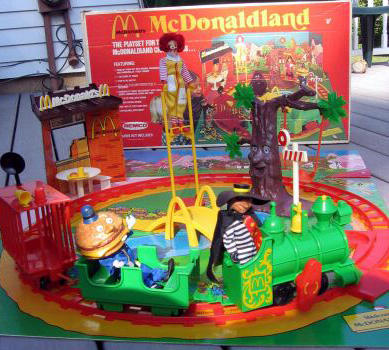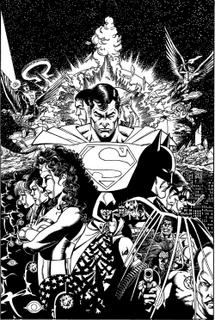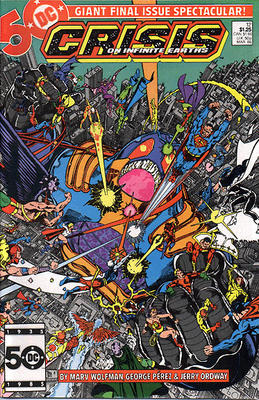It made me wonder if things like that happened to other things from my youth.
And then I thought of McDonaldland.
 You don't see much of it anymore, but it used to be that we got regular 30- to 60-second peeks into this strange land. I remembered watching them and even playing with the McDonaldland playset, complete with train.
You don't see much of it anymore, but it used to be that we got regular 30- to 60-second peeks into this strange land. I remembered watching them and even playing with the McDonaldland playset, complete with train.But having seen some original McDonaldland commercials in recent years, I made a somewhat disturbing discovery.
Grimace, Ronald's number-two, uh, guy, wasn't always among the good forces of McDonaldland. He started off as The Evil Grimace. Not only that, but he used to have four arms.
Crime used to be more prevalent in this realm. You had The Evil Grimace, who went around stealing milkshakes, there's the Hamburglar, who (duh) stole hamburgers. The Fry Guys (originally the Gobble-ins) would pilfer your french fries if you didn't keep your eyes on them, and Captain Crook was a pirate who couldn't resist Filet O'Fish sandwiches.
I'll give Captain Crook a pass, because anyone who reduces the probablility of me encountering a Filet O'Fish is all right in my book.
Big Mac the cop clearly had his hands full, and I'm assuming Ronald, as high potentate of the land, pressured him to clean up all this potential crime. But I suspect that Big Mac wasn't really that good of an officer. I get the feeling that he got his job because of his close relationship (brothers? cousins?) to Mayor McCheese.
McCheese was probably hassling Big Mac quite a bit, too, you know, like "I got you this job, so you better make it look like you're at least trying."
But what was he to do?
Captain Crook could always escape to the high seas. The Fry Guys had strength in numbers. You took out a few, more would rise to take their place.
And the Hamburglar was just too crafty.
That left The Evil Grimace. This isn't much of a surprise, because I noticed that, even as an evil creature, Grimace didn't seem all that bright.
This is how I think it might have happened:
Facing pressure from both Ronald and Mayor McCheese, Big Mac sets his sights on The Evil Grimace. He seeks out the services of The Professor.
"Professor, I need your help."
"Always glad to help, Big Mac. What can I do for you?"
"It's The Evil Grimace. I need to stop him. Kill him if necessary."
"Nothing can kill the Grimace."
So they devise a plan. They go to The Evil Grimace's cave while he's asleep. The plan goes awry when Grimace wakes up and goes on a rampage. Big Mac relies on his training and disarms Grimace. Twice.
While Grimace bellows at the loss of two of his arms, The Professor sneaks behind him and drops a brainwave inhibitor helmet on the purple blob. As soon as Grimace is under, The Professor brainwashes him, removing his tendencies for evil. Alas, this diminishes Grimace's already limited faculties, making him into the goofball we know him as today.
Once the process is complete, they fabricate an elaborate tale that cements Big Mac's status as the top cop in McDonaldland. The Professor doesn't say what really happened, and in exchange, Big Mac looks the other way when it comes to The Professor's "experiments."
Everyone is happy, and crime is reduced in McDonaldland. Eventually, Captain Crook is seen less frequently, and the Hamburglar becomes less interested in Grand Theft Burger and more interested with gaining a more youthful appearance.
And nobody even wonders about the missing souls from the neighboring Burger Kingdom: Sir Shakes-A-Lot, The Duke of Doubt, and poor Burger Thing.
Okay, time for lunch...



